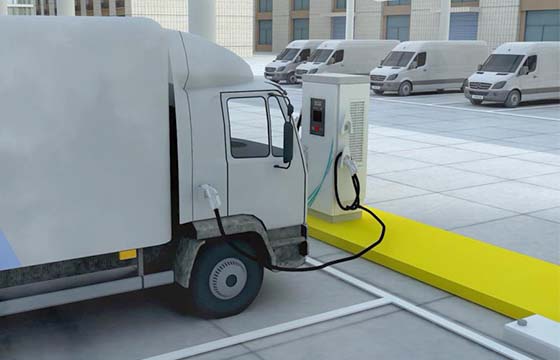Time:
When it concerns electrifying fleets, the first concern with the electrification of a commercial fleet is how much the transition will cost. There are 2 key aspects to focus on, operating costs and maintenance costs.

In general, hardware costs include electric fleet costs and infrastructure costs. Besides, the cost of the EV charging station management system should also be counted.
When electrifying a fleet, it is important to determine what type of vehicle and power source will allow you to get the most out of your electric fleet. Currently, there are two main types of EVs for fleets: battery electric vehicles (BEVs) and hybrid electric vehicles (HEVs). Fleet owners need to choose the solution that best fits their commitment to sustainability and also provides significant freight savings.
To determine the cost of EVSE, you need to know how many chargers you will need and what type of EV chargers you will install. This should be considered based on your fleet size, hours of operation, and site conditions. Contact Grasen for a tailored fleet charging solution.
A cloud-based CSMS can enable users to connect and control all EV infrastructure from a central hub. Fleet owners can realize real-time monitoring, record tracking, and energy management, which can contribute to fleet cost management. Grasen offers CSMS with a custom interface, and we also have rental versions at less cost.
Tips: How can I reduce costs?
Grants and Rebates - Many cities and states offer grants and rebates to help countervail the cost of vehicle and infrastructure conversions. Check the policies in your local area and Grasen can break down your infrastructure needs to help identify savings and subsidies available to you.
Maintaining the Vehicles - For most gas-powered fleets, maintenance is a major line item in the annual budget. According to a recent report by the Argonne National Laboratory, maintenance for electric vehicles costs around 40% less than maintenance for gas-powered vehicles. An EV has much fewer functioning parts than Internal Combustion Engines (ICE) or Hybrid ones since they have no engine, no transmission, or gearbox. Considering there is less to maintain, the operating costs reduce significantly.
Maintaining the Infrastructure - Like most electric equipment, the EV chargers need maintenance too. However, a well-built, quality AC or DC charging station only requires simple maintenance.
After the station is properly installed and connected to the internet to run the backend operating system, the charging station operators can realize remote management and monitoring with minimal staff. Some EV chargers like Grasen's AC and DC fast charger support one click to update the firmware of the charger, and all the information is under control the first time.
Electrifying fleets can be complex and requires careful planning. It’s important to have the right partner. If you are looking for an expert who can help guide you through the process, reach out and let us get you started!
Submit Request